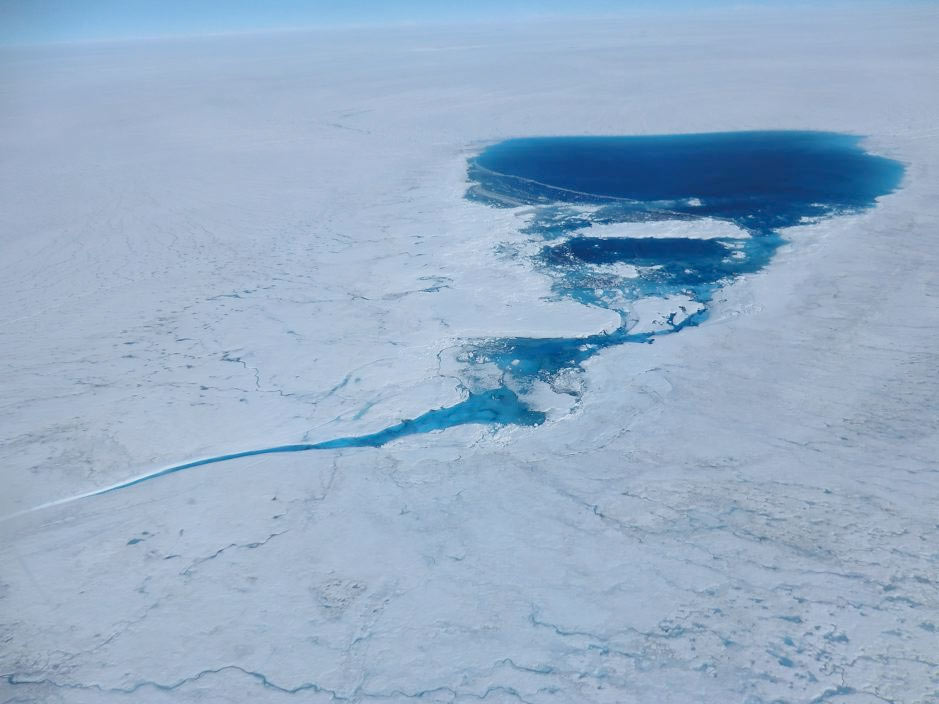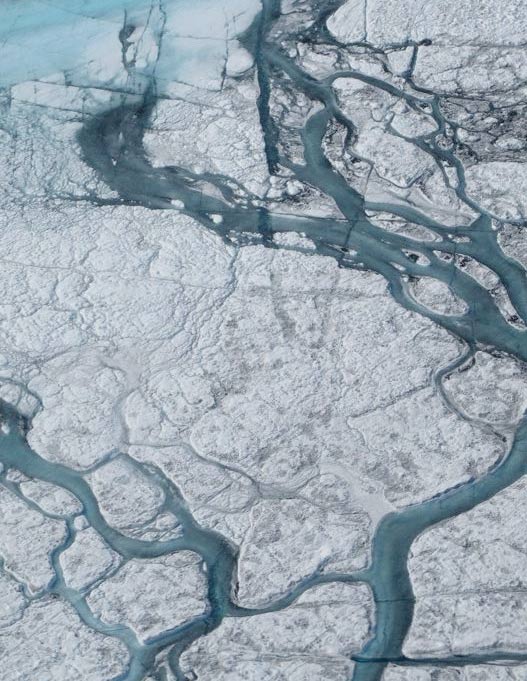Melting of Greenland Ice Sheet Breaks 30-Year Record

On Aug. 8, the Greenland ice sheet shattered a seasonal record, with more cumulative melting since record-keeping began more than three decades ago, new research finds.
Greenland's melting season usually begins in June, when the first puddles of meltwater emerge, and lasts through early September, when temperatures begin to cool. This year, a full four weeks before the end of the melt season, the ice sheet had shed more water than the record reached during the full season in 2010.
"With more yet to come in August, this year's overall melting will fall way above the old records. That's a Goliath year — the greatest melt since satellite recording began in 1979," said study researcher Marco Tedesco, assistant professor of Earth and atmospheric sciences at The City College of New York.
To calculate Greenland ice-sheet melting, Tedesco and his colleagues used data collected by microwave satellite sensors, as part of the U.S. Air Force Defense Meteorological Satellite Program, across the Greenland ice sheet. [Giant Ice: Photos of Greenland's Glaciers]
The results showed extreme melting in nearly every region of Greenland, including the west, northwest and northeast. Particularly, melting occurred at high elevations, where, in most years, the snow and ice melt for a few days, at most. This year, that melting has already continued for two months, Tedesco found.

"Part of the meltwater will refreeze and part of the meltwater will run off to create streams and eventually take off into the sea and contribute to sea-level rise or the hydrological cycle," Tedesco told LiveScience during an interview.
The meltwater that puddles up on the surface of Greenland can also percolate through the snow and into the ice, lubricating that ice and possibly speeding its journey into the sea.
Sign up for the Live Science daily newsletter now
Get the world’s most fascinating discoveries delivered straight to your inbox.
This meltwater record is different from one announced in mid-July, when NASA satellite images showed that over just a few days, nearly all of the veneer of surface ice atop Greenland's massive ice sheet had thawed, breaking a more than 30-year record.
Most of that ice, however, refroze rather than running off into the ocean or creating streams within or on top of the ice sheet, Tedesco said.
"The melting in terms of how much water was produced is relatively small," Tedesco said of the July event.
As for the cause of the new meltwater record, Tedesco points to warming temperatures. He added that scientists are looking into whether or not this warming is part of a larger pattern of global warming.
"We have to be careful because we are only talking about a couple of years and the history of Greenland happened over millennia," Tedesco noted in a statement.
He added to LiveScience, "It's no doubt that the warming of the Arctic and whatever is related to that is responsible at least for triggering the melting mechanism at the beginning of the season and providing enough gas to keep it going."
Tedesco is referring to a feedback that occurs when snow melts away, leaving bare ice, which is darker and absorbs more heat (called a high albedo) than the brighter snow.
Overall, southern Greenland is going through changes, with the ice sheet thinning at its edges and steams and lakes growing atop its glaciers.
Follow LiveScience on Twitter @livescience. We're also on Facebook & Google+.
Jeanna Bryner is managing editor of Scientific American. Previously she was editor in chief of Live Science and, prior to that, an editor at Scholastic's Science World magazine. Bryner has an English degree from Salisbury University, a master's degree in biogeochemistry and environmental sciences from the University of Maryland and a graduate science journalism degree from New York University. She has worked as a biologist in Florida, where she monitored wetlands and did field surveys for endangered species, including the gorgeous Florida Scrub Jay. She also received an ocean sciences journalism fellowship from the Woods Hole Oceanographic Institution. She is a firm believer that science is for everyone and that just about everything can be viewed through the lens of science.










